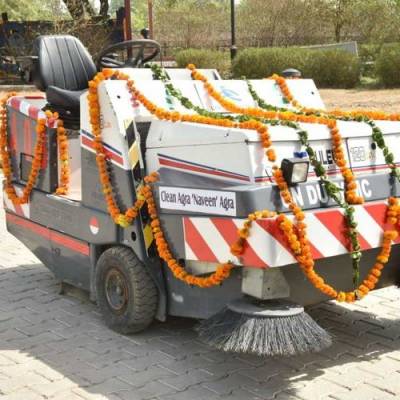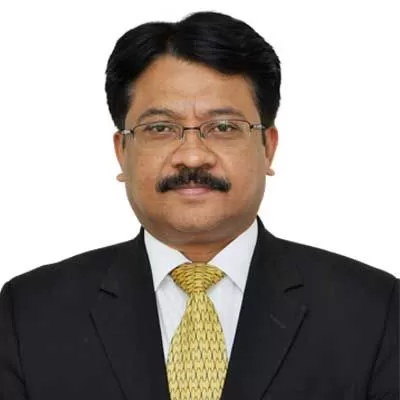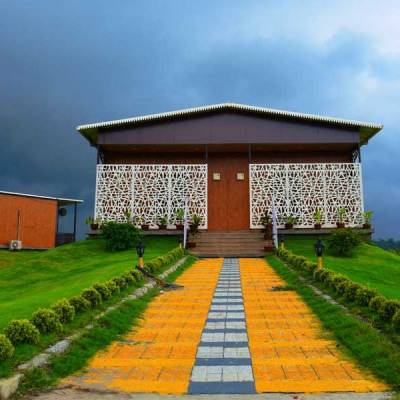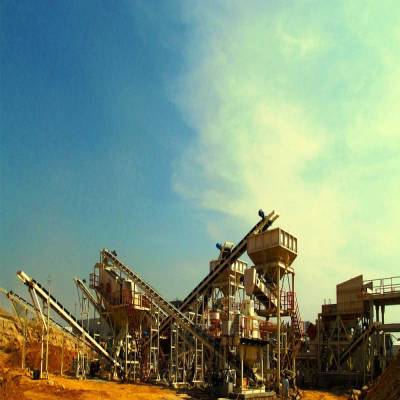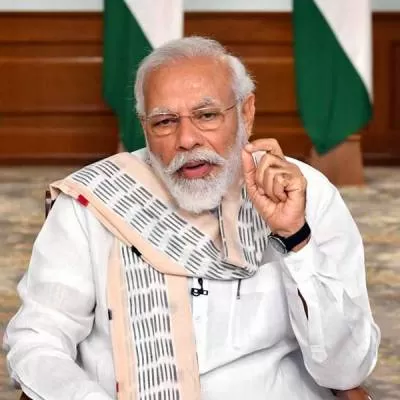- Home
- Infrastructure Urban
- ECONOMY & POLICY
- Is Swachh Bharat Losing Steam?

Is Swachh Bharat Losing Steam?
Swachh Bharat Abhiyan, a scheme that depends on massive financial assistance from the Centre, is likely to miss its deadline of 2019 on account of slashing Rs 635 crore of financial assistance, reducing it from Rs 4,135 crore to Rs 3,500 crore.
What´s more, as the Centre has asked state governments to bear the larger portion of the cost, Centre-state coordination will be a key to the success of one of the largest cleanliness drive programmes of the country. Corporate firms are also pitching in a considerable share towards the mission as part of their CSR activities.
Corporates chip in Corporate houses are willing to shell out 2 per cent of their three-year average annual net profit towards CSR activities for the Swachh Bharat Mission. For instance, Bharti Foundation has committed to invest Rs 100 crore for the construction of girls´ toilets in Ludhiana. Its programme, Satya Bharti Abhiyan, aims to bring sanitation to households and it will construct close to 30,000 toilets.
TCS has announced that it will finance the construction of hygienic sanitation facilities for girl students in 10,000 schools. It has earmarked Rs 100 crore for the project. Eram Scientific Solutions (ESS) Pvt Ltd has been constructing e-toilets for TCS. The Bill and Melinda Gates Foundation has thus far installed 650 toilets in 15 states and it has invested Rs 20 crore for the initiative. ¨We are currently working with TCS to implement e-toilets in 361 schools in Andhra Pradesh as part of its CSR initiative,¨ says Anvar Sadath K, CEO, ESS. ¨Although we are tied up with corporate as a service provider, we are bearing close to 40 to 45 per cent tax on e-toilets. The government should reduce such tax burdens on service providers and manufacturers. Even the excise duty on e-toilets should be reduced to promote these eco-friendly toilets that can generate multiple revenue options courtesy features like pre-flushing and automatic flushing options, unmanned self-cleaning and simple user interfaces unlike conventional toilets.¨
Jindal Architecture, a subsidiary of Jindal Stainless Steel Ltd, has introduced modular stainless steel toilets as a part of Swachh Bharat Abhiyan. These toilets have been launched with a prospective life of over 25 years and require minimal maintenance. ¨The toilets manufactured are available in single seat, set of six seats (community toilets) and single seat with four urinals,¨ informs Anuj Jain, CEO, Jindal Architecture. ¨We are providing toilets with bio-disposable tanks for areas where sewerage and waste disposal is abysmal. We have already had orders for over 550 toilets and have supplied to various public and private-sector companies under their CSR initiative. We expect to do over 2,000 toilets this year. Single-unit toilets cost a minimum of Rs 99,999, six-unit community toilets cost Rs 3.99 lakh and eight units cost Rs 4.99 lakh.¨
Meanwhile, Rusen Kumar, Director, CSR India, points out, ¨Very few corporate organisations take up such social welfare activities as a duty towards society. Most of them perceive these as means to gain tax benefits - excellent carrots!¨
Kosh to streamline funds
The allotted Rs 1.96 lakh crore by the Central Government for the rural and urban Swachh Bharat Mission is miniscule and more funds are the need of the hour. Private-sector participation coming through CSR is expected to fill the investment gaps. The Swachh Bharat Kosh (SBK) has been set up by the Finance Ministry to facilitate the channelling of philanthropic contributions and CSR funds. ¨Till now, the total funds released by Swachh Bharat Kosh amount to Rs 85 crore, sanctioned by the board for building girls´ toilets,¨ says Vivek Joshi, Administrator, Swachh Bharat Kosh.
¨We are getting a steady flow of funds for the mission, mostly from corporate and individuals, not NRIs,¨ he adds. ¨The Budget has proposed to implement the 2 per cent cess on service tax and allow 10 per cent deduction on SBK, which would definitely increase the fund flow. As of now, we are dealing with funds related to the toilets built for girl students.¨ Meanwhile, the secretary for the Drinking Water and Sanitation Ministry has stated to the parliamentary panel that there are serious apprehensions as to how the mission will be successfully accomplished when there is no clarity on the guidelines of SBK.
According to the guidelines of the Finance Ministry, the prime minister himself will acknowledge contributions of over Rs 1 crore made by individuals and over Rs 20 crore by corporate houses in SBK. About Rs 10 to 20 crore as well as Rs 50 lakh to Rs 1 crore-worth companies would come under the purview of the Finance Ministry. SBK is administered by a governing council and chaired by the secretary for the Ministry of Expenditure (Finance). Its functioning will be monitored on a quarterly basis by the finance minister and the prime minister from time to time.
Toilets for all: a big challenge
Without the support of corporate organisations and public-sector units (PSUs), the mission´s main activity of building ´Toilets for All´ and implementing sanitation and improving GDP remains a dream. The mission, kick-started on October 2, 2014, has been slow in implementation. In FY2014-15, 5.9 million toilets were made. Compared to FY2013-14, in which 4.9 million were constructed, this was not a significant jump and much below the needed rate of 28 million. According to government data, a total of 31.83 lakh toilets were built between April 2014 and January 2015, which is 25.4 per cent of the target for FY2014-15. The programme entails an investment of nearly Rs 2 lakh crore over the next five years to construct 12 crore toilets in India. ¨The returns on sanitation are 1:6 in terms of productivity gains,¨ says Nitya Jacob, Head of Policy, Water Aid. ¨Most gains come from reducing medical expenses. But I don´t think the mission will make any difference to the economy. There aren´t enough people and the supply chain is too weak.¨ Further, each state is yet to go a long way in solid and liquid waste management, a key objective of the mission.
It is evident that this mammoth clean drive, which goes with the tagline ´a step towards cleanliness´, requires rapid strides to reach its five-year goal, drawing to a close on October 2, 2019 and coinciding with the 150th birth anniversary of Mahatma Gandhi.
Quick Bytes
- Corporates willing to spend 2% of three-year average annual net profit on CSR activities for the mission.
- Toilets for All - need support from corporates and PSUs.
- India will need Rs.60,000 crore per year for municipal solid waste management alone.
Solid Waste Management
It is not just human resources. Even waste management and disposal, an important aspect featuring third on the list of the Swachh Bharat Mission´s objectives, have not been given ample focus. Sadly, the companies looking to spend their CSR funds for clean India have shown no inclination towards this part of the mission. Of the total first instalment funds of Rs 859 crore issued by the Urban Development Ministry, Rs 287.5 crore has been allocated for solid waste management. Uttar Pradesh has been allotted the largest share amounting to Rs 37.56, followed by West Bengal (Rs 34.54 crore) and Andhra Pradesh (Rs 21.02 crore), while a few states like Maharashtra, Karnataka, Kerala and Odisha have not been allotted funds.
¨The mission totally concentrates on construction of toilets, showing little enthusiasm towards waste management,¨ says Amiya Kumar Sahu, Founder, National Solid Waste Association of India (NSWAI). ¨Waste management requires engaging waste generators, collectors, rag pickers, segregators and disposers. Unlike toilets, it is not a one-time investment. Rather, it is a tedious process involving high capital expense. In addition, it requires constant maintenance and monitoring; so there are no takers.¨ The country will need Rs 60,000 crore per year for municipal solid waste management alone. According to a 2012 report of the Central Pollution Control Board, India generates almost 50,000 tonne of municipal wastes every day. Barely 12 per cent of this gets treated or disposed in a scientific manner. ¨The mission has given peanuts for solid waste management; not even a single PPP model has been signed in the sector till date,¨ adds Sahu. ¨The Urban Development Ministry should ask urban local bodies to take active steps in the sector.¨
Meanwhile, the North and South Delhi Municipal Corporations have informed that they have not received the allotted amount from the Swachh Bharat Fund. ¨The Centre is yet to give the money due from the Fund,¨ reveals Amit Yadav, Municipal Commissioner, East Delhi.
¨The South Delhi Corporation is yet to receive Rs 200 crore slated for cleaning and waste management,¨ says Mukesh Yadav, Spokesperson, South Delhi Municipal Corporation.
Meanwhile, Attero, an e-waste company, has tied up with the World Bank for a campaign on collecting e-waste from informal sector workers. ¨The mission should have added e-waste as a separate objective because it´s the most hazardous waste generated. Nearly 95 per cent of e-waste recycling is handled by an unorganised sector that, unfortunately, is not equipped with the technology or capital to undertake recycling in an environment-friendly and safe manner,¨ informs Nitin Gupta, CEO, Attero. India generates 800,000 tonne of e-waste annually and this is set to reach 1.72 million metric tonne by 2020.
Meanwhile, wastewater management - building sewage and sewage treatment plants - needs abundant funds and the budget provided in Swachh Bharat does not suffice.¨Five years ago, an estimate was put by an expert committee that the wastewater plan for the country would be Rs 380,000 crore but now the requirement is 20 per cent more than estimated,¨ opines K Vishwanath, Advisor, Biome Solutions. Available wastewater management technology is high on capital and maintenance costs, which no corporate house is willing to fund. According to Sulabh International, of about 4,700 towns and cities in India, only 232 have a sewerage system and that too only partial. Most untreated wastewater is, therefore, discharged into rivers or other water bodies. In rural areas, it is a common practice to discharge waste without collection. There is no question of treatment, recycle or even reuse of waste water sullage as people are not even aware of this technology. ¨We have come with a simple and cost-effective duckweed-based wastewater treatment in rural and urban areas that can give direct economic returns,¨ adds Pathak. But such projects are not fully exploited. As though the Centre has a mission and gives funds, the states and municipalities do not implement it.¨
Clean Ganga Mission
The National Ganga Plan has been earmarked Rs 2,100 crore in Budget 2015, which is Rs 600 crore more compared to the revised budget of 2014-15. The amount is to be met from the National Clean Energy Fund (NCEF).
Under the World Bank-aided project, automatic water quality monitoring has been set up under the NGRBA project for the river Ganga at an estimated cost of Rs 94.45 crore. The network will consist of 113 stations at critical locations along the main stem of the river. These stations will be located:
- Upstream and downstream major urban areas.
- On major tributaries upstream of the confluence with the Ganga.
- Downstream of sewerage treatment plants (STPs).
- In major nallahs.
- Downstream industrial areas.
- At intakes of drinking water treatment plants.
- At important bathing ghats.
This project focuses on the main stem of Ganga River in the states of Uttarakhand, Uttar Pradesh, Bihar, Jharkhand and West Bengal with the following objectives:
- To assess nature and extent of pollution.
- To understand the environmental fate of different pollutants.
- To evaluate effectiveness of pollution control measures in place.
- To evaluate water quality trend.
- To assess the fitness of water for different uses.
This project is expected to provide a state-of-the-art, real-time picture of water quality of the Ganga through real-time data acquired the data from all 113 stations for predefined parameters. The parameters include ammonia, BOD, COD, BTX chloride, DO, DOC, EC, fluoride, nitrate, hydrogen sulphide, pH, potassium, TOC, TSS turbidity, colour, temperature nitrites and water level. The executing agency of this project is the NGRBA Cell of CPCB for implementing the automatic water quality monitoring system.
| Investments by Corporate CSR arm | ||
|---|---|---|
| Company | Total Investment | No. of toilets |
| GAIL | Rs. 27 crore | 1,021 |
| Bharti Foundation | Rs. 100 crore | 30,000 |
| Coal India Ltd | Rs. 235 crore | 6,000 |
| NTPC | Rs. 1.3 lakh | 8,152 |
| AAI | Rs. 27 crore | 765 |
| Reckitt Benckiser | Rs. 100 crore | - |
| Progress Status of NGRBA Projects in the Basin States (As on December 31, 2014) | |||||||
|---|---|---|---|---|---|---|---|
| State | Uttarakhand (16 projects in 11 towns) |
Uttar Pradesh (15 projects in 8 towns) |
Bihar (12 projects in 5 towns) |
Jharkhand (1 project in 1 town) |
West Bengal (30 projects in 24 towns) |
Sub total (Ganga) | |
| Capital cost | 201.55 | 1,898.01 | 1,226.64 | 89.36 | 976.95 | 4,392.51 | |
| O&M cost | 49.66 | 92.14 | 78.94 | 10.00 | 103.24 | 333.98 | |
| Total sanctioned costs | 251.21 | 2,256.01 | 1,702.06 | 99.36 | 1,352.51 | 5,661.15 | |
| STP capacity to be created (in mld) | 38.80 | 335.90 | 158.00 | 12.00 | 93.53 | 638.23 | |
| STP capacity created (in mld) | 18.00 | 105.00 | 123.00 | ||||
| Sewer network to be laid (in km) | 146.44 | 1,255.68 | 1,014.83 | 55.00 | 842.72 | 3,314.67 | |
| Sewer network laid (in km) | 55.49 | 361.00 | 125.95 | 0.00 | 58.30 | 600.74 | |
| Release of fund | GOI | 61.92 | 540.62 | 126.51 | 6.26 | 215.38 | 950.69 |
| State | 15.24 | 175.32 | 41.25 | 2.68 | 92.30 | 326.79 | |
| Total | 77.16 | 715.94 | 167.76 | 8.94 | 307.68 | 1,277.48 | |
| Total expenditure | 71.16 | 584.74 | *75.53 | 295.99 | 1,027.42 | ||
| Total no. of projects | 16 | 15 | 12 | 1 | 30 | 74 | |
| No. of projects physically completed | 2 | 23 | 25 | ||||
| Source: National Mission for Clean Ganga | |||||||
- Swachh Bharat Abhiyan
- TCS
- Eram Scientific Solutions (ESS) Pvt Ltd
- Anvar Sadath
- Jindal Architecture
- Jindal Stainless Steel Ltd
- Anuj Jain
- Jindal Architecture
- Rusen Kumar
- CSR India
- Swachh Bharat Kosh
- Vivek Joshi
- Nitya Jacob
- Water Aid
- Amiya Kumar Sahu
- National Solid Waste Association of India
- NSWAI
- PPP Model
- Amit Yadav
- East Delhi
- Attero
- Nitin Gupta
- K Vishwanath
- Biome Solutions,
The much touted ´Abhiyan´ of the Centre, Swachh Bharat has hit its first roadblock: a funding block. This has given rise to speculation regarding the feasibility of the mission. Swachh Bharat Abhiyan, a scheme that depends on massive financial assistance from the Centre, is likely to miss its deadline of 2019 on account of slashing Rs 635 crore of financial assistance, reducing it from Rs 4,135 crore to Rs 3,500 crore. What´s more, as the Centre has asked state governments to bear the larger portion of the cost, Centre-state coordination will be a key to the success of one of the largest cleanliness drive programmes of the country. Corporate firms are also pitching in a considerable share towards the mission as part of their CSR activities. Corporates chip in Corporate houses are willing to shell out 2 per cent of their three-year average annual net profit towards CSR activities for the Swachh Bharat Mission. For instance, Bharti Foundation has committed to invest Rs 100 crore for the construction of girls´ toilets in Ludhiana. Its programme, Satya Bharti Abhiyan, aims to bring sanitation to households and it will construct close to 30,000 toilets. TCS has announced that it will finance the construction of hygienic sanitation facilities for girl students in 10,000 schools. It has earmarked Rs 100 crore for the project. Eram Scientific Solutions (ESS) Pvt Ltd has been constructing e-toilets for TCS. The Bill and Melinda Gates Foundation has thus far installed 650 toilets in 15 states and it has invested Rs 20 crore for the initiative. ¨We are currently working with TCS to implement e-toilets in 361 schools in Andhra Pradesh as part of its CSR initiative,¨ says Anvar Sadath K, CEO, ESS. ¨Although we are tied up with corporate as a service provider, we are bearing close to 40 to 45 per cent tax on e-toilets. The government should reduce such tax burdens on service providers and manufacturers. Even the excise duty on e-toilets should be reduced to promote these eco-friendly toilets that can generate multiple revenue options courtesy features like pre-flushing and automatic flushing options, unmanned self-cleaning and simple user interfaces unlike conventional toilets.¨ Jindal Architecture, a subsidiary of Jindal Stainless Steel Ltd, has introduced modular stainless steel toilets as a part of Swachh Bharat Abhiyan. These toilets have been launched with a prospective life of over 25 years and require minimal maintenance. ¨The toilets manufactured are available in single seat, set of six seats (community toilets) and single seat with four urinals,¨ informs Anuj Jain, CEO, Jindal Architecture. ¨We are providing toilets with bio-disposable tanks for areas where sewerage and waste disposal is abysmal. We have already had orders for over 550 toilets and have supplied to various public and private-sector companies under their CSR initiative. We expect to do over 2,000 toilets this year. Single-unit toilets cost a minimum of Rs 99,999, six-unit community toilets cost Rs 3.99 lakh and eight units cost Rs 4.99 lakh.¨ Meanwhile, Rusen Kumar, Director, CSR India, points out, ¨Very few corporate organisations take up such social welfare activities as a duty towards society. Most of them perceive these as means to gain tax benefits - excellent carrots!¨ Kosh to streamline funds The allotted Rs 1.96 lakh crore by the Central Government for the rural and urban Swachh Bharat Mission is miniscule and more funds are the need of the hour. Private-sector participation coming through CSR is expected to fill the investment gaps. The Swachh Bharat Kosh (SBK) has been set up by the Finance Ministry to facilitate the channelling of philanthropic contributions and CSR funds. ¨Till now, the total funds released by Swachh Bharat Kosh amount to Rs 85 crore, sanctioned by the board for building girls´ toilets,¨ says Vivek Joshi, Administrator, Swachh Bharat Kosh. ¨We are getting a steady flow of funds for the mission, mostly from corporate and individuals, not NRIs,¨ he adds. ¨The Budget has proposed to implement the 2 per cent cess on service tax and allow 10 per cent deduction on SBK, which would definitely increase the fund flow. As of now, we are dealing with funds related to the toilets built for girl students.¨ Meanwhile, the secretary for the Drinking Water and Sanitation Ministry has stated to the parliamentary panel that there are serious apprehensions as to how the mission will be successfully accomplished when there is no clarity on the guidelines of SBK. According to the guidelines of the Finance Ministry, the prime minister himself will acknowledge contributions of over Rs 1 crore made by individuals and over Rs 20 crore by corporate houses in SBK. About Rs 10 to 20 crore as well as Rs 50 lakh to Rs 1 crore-worth companies would come under the purview of the Finance Ministry. SBK is administered by a governing council and chaired by the secretary for the Ministry of Expenditure (Finance). Its functioning will be monitored on a quarterly basis by the finance minister and the prime minister from time to time. Toilets for all: a big challenge Without the support of corporate organisations and public-sector units (PSUs), the mission´s main activity of building ´Toilets for All´ and implementing sanitation and improving GDP remains a dream. The mission, kick-started on October 2, 2014, has been slow in implementation. In FY2014-15, 5.9 million toilets were made. Compared to FY2013-14, in which 4.9 million were constructed, this was not a significant jump and much below the needed rate of 28 million. According to government data, a total of 31.83 lakh toilets were built between April 2014 and January 2015, which is 25.4 per cent of the target for FY2014-15. The programme entails an investment of nearly Rs 2 lakh crore over the next five years to construct 12 crore toilets in India. ¨The returns on sanitation are 1:6 in terms of productivity gains,¨ says Nitya Jacob, Head of Policy, Water Aid. ¨Most gains come from reducing medical expenses. But I don´t think the mission will make any difference to the economy. There aren´t enough people and the supply chain is too weak.¨ Further, each state is yet to go a long way in solid and liquid waste management, a key objective of the mission. It is evident that this mammoth clean drive, which goes with the tagline ´a step towards cleanliness´, requires rapid strides to reach its five-year goal, drawing to a close on October 2, 2019 and coinciding with the 150th birth anniversary of Mahatma Gandhi. Quick Bytes Corporates willing to spend 2% of three-year average annual net profit on CSR activities for the mission. Toilets for All - need support from corporates and PSUs. India will need Rs.60,000 crore per year for municipal solid waste management alone. Solid Waste Management It is not just human resources. Even waste management and disposal, an important aspect featuring third on the list of the Swachh Bharat Mission´s objectives, have not been given ample focus. Sadly, the companies looking to spend their CSR funds for clean India have shown no inclination towards this part of the mission. Of the total first instalment funds of Rs 859 crore issued by the Urban Development Ministry, Rs 287.5 crore has been allocated for solid waste management. Uttar Pradesh has been allotted the largest share amounting to Rs 37.56, followed by West Bengal (Rs 34.54 crore) and Andhra Pradesh (Rs 21.02 crore), while a few states like Maharashtra, Karnataka, Kerala and Odisha have not been allotted funds. ¨The mission totally concentrates on construction of toilets, showing little enthusiasm towards waste management,¨ says Amiya Kumar Sahu, Founder, National Solid Waste Association of India (NSWAI). ¨Waste management requires engaging waste generators, collectors, rag pickers, segregators and disposers. Unlike toilets, it is not a one-time investment. Rather, it is a tedious process involving high capital expense. In addition, it requires constant maintenance and monitoring; so there are no takers.¨ The country will need Rs 60,000 crore per year for municipal solid waste management alone. According to a 2012 report of the Central Pollution Control Board, India generates almost 50,000 tonne of municipal wastes every day. Barely 12 per cent of this gets treated or disposed in a scientific manner. ¨The mission has given peanuts for solid waste management; not even a single PPP model has been signed in the sector till date,¨ adds Sahu. ¨The Urban Development Ministry should ask urban local bodies to take active steps in the sector.¨ Meanwhile, the North and South Delhi Municipal Corporations have informed that they have not received the allotted amount from the Swachh Bharat Fund. ¨The Centre is yet to give the money due from the Fund,¨ reveals Amit Yadav, Municipal Commissioner, East Delhi. ¨The South Delhi Corporation is yet to receive Rs 200 crore slated for cleaning and waste management,¨ says Mukesh Yadav, Spokesperson, South Delhi Municipal Corporation. Meanwhile, Attero, an e-waste company, has tied up with the World Bank for a campaign on collecting e-waste from informal sector workers. ¨The mission should have added e-waste as a separate objective because it´s the most hazardous waste generated. Nearly 95 per cent of e-waste recycling is handled by an unorganised sector that, unfortunately, is not equipped with the technology or capital to undertake recycling in an environment-friendly and safe manner,¨ informs Nitin Gupta, CEO, Attero. India generates 800,000 tonne of e-waste annually and this is set to reach 1.72 million metric tonne by 2020. Meanwhile, wastewater management - building sewage and sewage treatment plants - needs abundant funds and the budget provided in Swachh Bharat does not suffice.¨Five years ago, an estimate was put by an expert committee that the wastewater plan for the country would be Rs 380,000 crore but now the requirement is 20 per cent more than estimated,¨ opines K Vishwanath, Advisor, Biome Solutions. Available wastewater management technology is high on capital and maintenance costs, which no corporate house is willing to fund. According to Sulabh International, of about 4,700 towns and cities in India, only 232 have a sewerage system and that too only partial. Most untreated wastewater is, therefore, discharged into rivers or other water bodies. In rural areas, it is a common practice to discharge waste without collection. There is no question of treatment, recycle or even reuse of waste water sullage as people are not even aware of this technology. ¨We have come with a simple and cost-effective duckweed-based wastewater treatment in rural and urban areas that can give direct economic returns,¨ adds Pathak. But such projects are not fully exploited. As though the Centre has a mission and gives funds, the states and municipalities do not implement it.¨ p { margin-bottom: 0.1in; line-height: 120%; }a:link { } Clean Ganga Mission The National Ganga Plan has been earmarked Rs 2,100 crore in Budget 2015, which is Rs 600 crore more compared to the revised budget of 2014-15. The amount is to be met from the National Clean Energy Fund (NCEF). Under the World Bank-aided project, automatic water quality monitoring has been set up under the NGRBA project for the river Ganga at an estimated cost of Rs 94.45 crore. The network will consist of 113 stations at critical locations along the main stem of the river. These stations will be located: Upstream and downstream major urban areas. On major tributaries upstream of the confluence with the Ganga. Downstream of sewerage treatment plants (STPs). In major nallahs. Downstream industrial areas. At intakes of drinking water treatment plants. At important bathing ghats. This project focuses on the main stem of Ganga River in the states of Uttarakhand, Uttar Pradesh, Bihar, Jharkhand and West Bengal with the following objectives: To assess nature and extent of pollution. To understand the environmental fate of different pollutants. To evaluate effectiveness of pollution control measures in place. To evaluate water quality trend. To assess the fitness of water for different uses. This project is expected to provide a state-of-the-art, real-time picture of water quality of the Ganga through real-time data acquired the data from all 113 stations for predefined parameters. The parameters include ammonia, BOD, COD, BTX chloride, DO, DOC, EC, fluoride, nitrate, hydrogen sulphide, pH, potassium, TOC, TSS turbidity, colour, temperature nitrites and water level. The executing agency of this project is the NGRBA Cell of CPCB for implementing the automatic water quality monitoring system. Investments by Corporate CSR arm Company Total Investment No. of toilets GAIL Rs. 27 crore 1,021 Bharti Foundation Rs. 100 crore 30,000 Coal India Ltd Rs. 235 crore 6,000 NTPC Rs. 1.3 lakh 8,152 AAI Rs. 27 crore 765 Reckitt Benckiser Rs. 100 crore - Progress Status of NGRBA Projects in the Basin States (As on December 31, 2014) State Uttarakhand (16 projects in 11 towns) Uttar Pradesh (15 projects in 8 towns) Bihar (12 projects in 5 towns) Jharkhand (1 project in 1 town) West Bengal (30 projects in 24 towns) Sub total (Ganga) Capital cost 201.55 1,898.01 1,226.64 89.36 976.95 4,392.51 O&M cost 49.66 92.14 78.94 10.00 103.24 333.98 Total sanctioned costs 251.21 2,256.01 1,702.06 99.36 1,352.51 5,661.15 STP capacity to be created (in mld) 38.80 335.90 158.00 12.00 93.53 638.23 STP capacity created (in mld) 18.00 105.00 123.00 Sewer network to be laid (in km) 146.44 1,255.68 1,014.83 55.00 842.72 3,314.67 Sewer network laid (in km) 55.49 361.00 125.95 0.00 58.30 600.74 Release of fund GOI 61.92 540.62 126.51 6.26 215.38 950.69 State 15.24 175.32 41.25 2.68 92.30 326.79 Total 77.16 715.94 167.76 8.94 307.68 1,277.48 Total expenditure 71.16 584.74 *75.53 295.99 1,027.42 Total no. of projects 16 15 12 1 30 74 No. of projects physically completed 2 23 25 Source: National Mission for Clean Ganga


